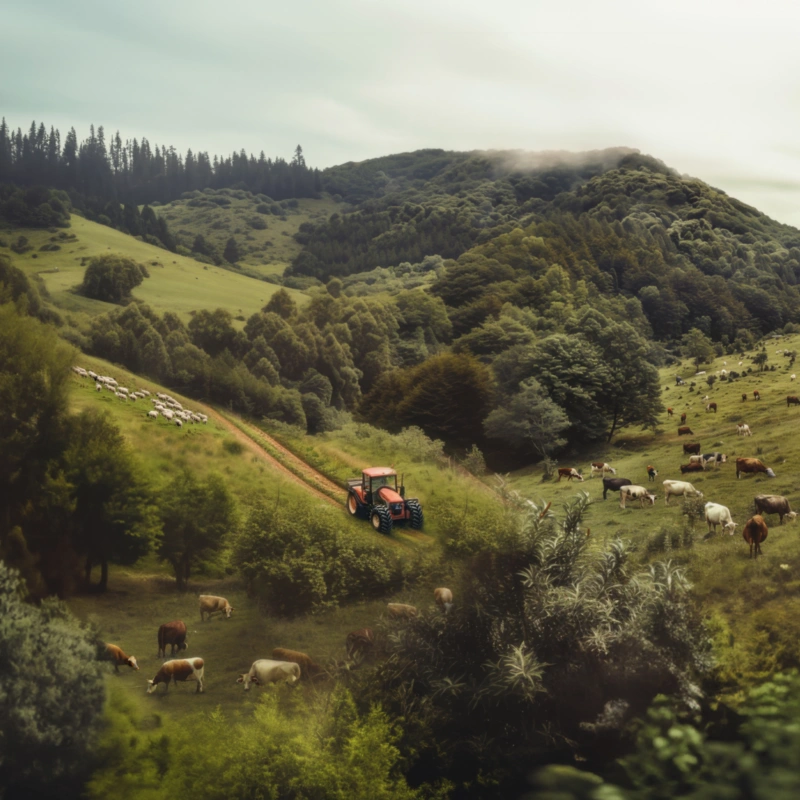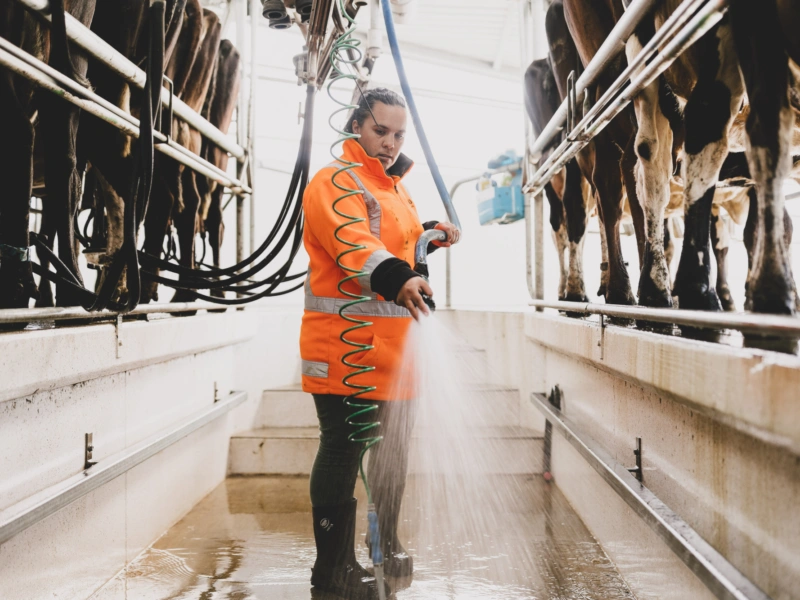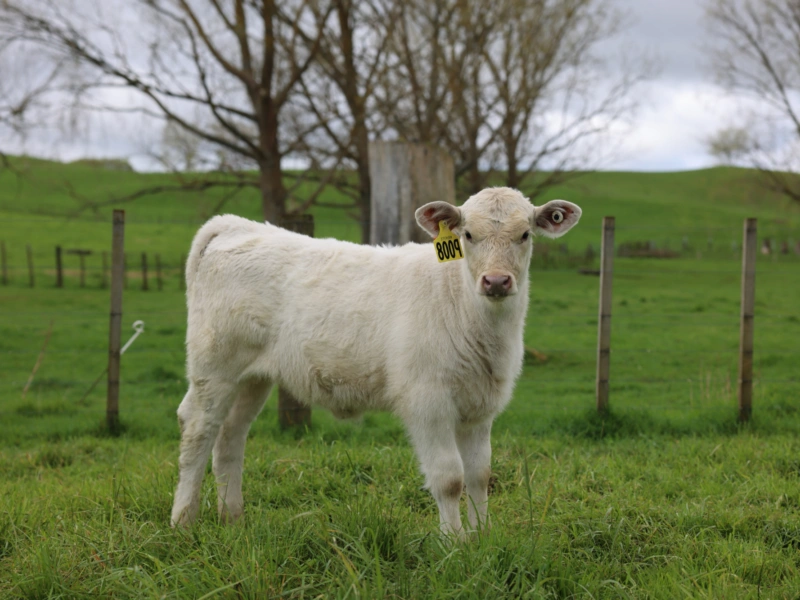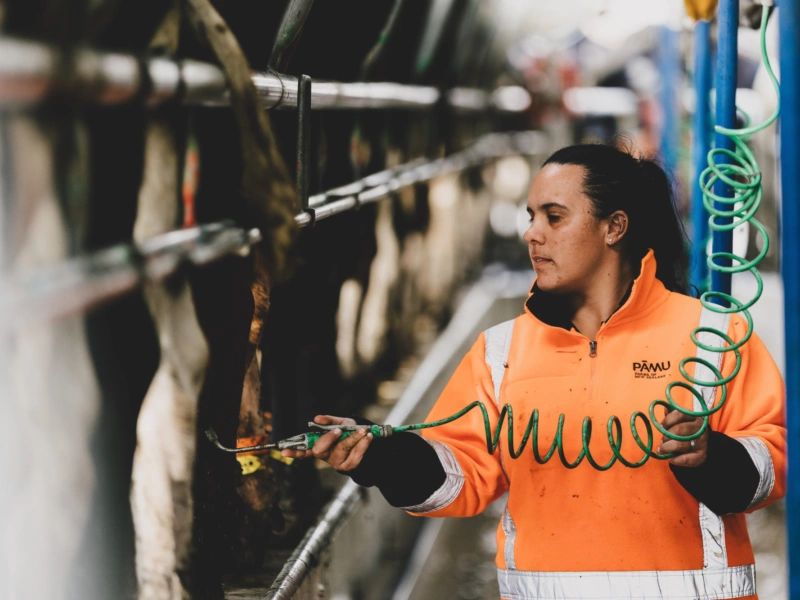An integrated system can be a win-win resulting in benefits for both sides
When livestock and forestry come together it can be the best of both worlds, leading to resilience against climate change, productive landscapes into the future and improved animal welfare.
Pāmu is proud to be part of the groundbreaking three-year research programme 'Taking the risk out of next-generation silvopastoral systems' funded by MPI’s Sustainable Land Management and Climate Change fund, alongside Scion researchers, AgResearch, and Orete II. The research is testing next-generation silvopastoral systems, where trees and pasture work together to enhance animal welfare, land resilience, and farm profitability.
Why Silvopasture?
Silvopastoral systems are a form of agroforestry involving livestock grazing on pasture. There has been little new research on silvopastoral systems in New Zealand for more than 30 years and there is a gap in current knowledge and lack of demonstrated systems. This project aims to change that.
Scion researchers and partners are on a mission to demonstrate the environmental, economic, cultural and social benefits of an integrated system. The goal is to conduct animal and plant monitoring and measurement across diverse trials including sheep, beef, and dairy farms.
A collaborative approach to smarter land use
During the research programme, which started in August 2024, the team will hold co-design workshops with research partners and landowners to identify sites where trees can either be planted into established farms or existing stands of trees can be modified. Animal and plant monitoring will ideally be done across trials on sheep, beef, and dairy farms.
Engagement with landowners occurred pre-proposal and will continue throughout ensuring research, infrastructure and project objectives are collaboratively developed, project lead Dr. Peter Clinton says.
“Co-design is a key requirement to ensure objectives are met and research is relevant to the needs and aspirations of landowners.”
Animal welfare and climate change are at the project’s core. Clinton, a microbial ecology and soil systems principal researcher, says trees on farms create more natural shelter for animals from the elements. Other benefits include less erosion, potentially more biodiversity and increased carbon sequestration. Clinton hopes the trials can continue beyond the life of the research project.
Pāmu Forestry Business Managers Simon van Haandel and Penny Baker are actively contributing insights from Pāmu’s own livestock and forestry integration work, ensuring research findings are practical and scalable for New Zealand farmers. Simon says deciduous silvopastoral systems could be a viable land use option on vulnerable land types across New Zealand.
He says climate modelling shows extreme weather events will worsen over time which will reduce productivity and increase the risks to both stock and the land. Trees can help mitigate the effects of erosion and minimise the impacts of extreme weather by cooling air and regulating water flows.
“Historical silvopastoral trials under radiata pine were not economically viable however other values such as erosion control, animal health, shade and shelter, timber and carbon are becoming increasingly important for farm resilience in the face of climate change. Pāmu hopes that through the project we can show the conditions under which silvopastoral systems can work in New Zealand to provide farmers with another option for their tool kit.”
Dane Tamepo (The Proprietors of Orete ll & Other Blocks Incorporated) believes science is pivotal in addressing climate change and building resilience across the Incorporation’s dairy operation and other land uses. Central to their discussions are the priorities of people, climate, animal welfare, water quality, and adapting farming systems to support long-term land-use sustainability.
The Incorporation also has an interwoven relationship with other whenua landowners within Te Whānau a Pararaki hapū, Te Whānau-ā-Apanui, Iwi.
“With this in mind our intention is to share the research so that our whānau, hapū and Iwi can benefit. Understanding our unique challenges and bringing to the table our Te Ao Māori worldview, are key outcomes for us and why we are involved in this research,” Tamepo says.
Senior scientist Karin Schutz of AgResearch’s Animal Behaviour and Welfare team says she is excited about the project as it incorporates a One Welfare perspective — the concept that animal welfare depends on and influences human wellbeing, biodiversity and the environment, and is therefore interconnected.
“Cows and sheep are very good at seeking out microclimates that help them thermoregulate and stay comfortable so it is good for their welfare. It is also good for the farmer because animals that do not have to spend energy to thermoregulate produce more, so it is good for the wallet as well. It is a win-win for both animals and farmers.”
Looking to the future
In the short term, the project aims to develop new systems infrastructure to promote farming practice changes. In the medium term, it aims to develop methods for quantifying the benefits of silvopastoral systems. Long-term, the aim is for local communities to have increased confidence in the future of silvopastoral systems, for the public to have greater confidence in the intergenerational sustainability of New Zealand agriculture and for the Government to have greater confidence in the farming community’s ability to adapt to climate change and other global pressures.
Pāmu is proud to be part of this initiative, helping shape a farming future that works in harmony with the land, not against it.
Learn more about this pioneering research:



